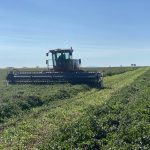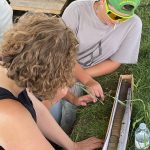An estimated 25 per cent of North America’s mint oil is now the product of a southeastern Alberta farming business, but don’t get the idea that commercial mint production is a job for the faint of heart.


Quattro Ventures grows mint for the essential oils market and had a lot to learn about the agronomics for this specialty crop

Agronomy Management: Take representative soil samples, choose the right depths, analyze key nutrients

We examine an Idaho farmer’s program for crop self-defence

In a stressful market environment, best practices can reduce risk and drive profit

A veteran agronomist, speaking at the recent Manitoba Agronomists Conference, offers advice on how to handle difficult discussions with clients

Agronomy Management: It’s important to have adequate P close to the seed during the first six weeks of growth



